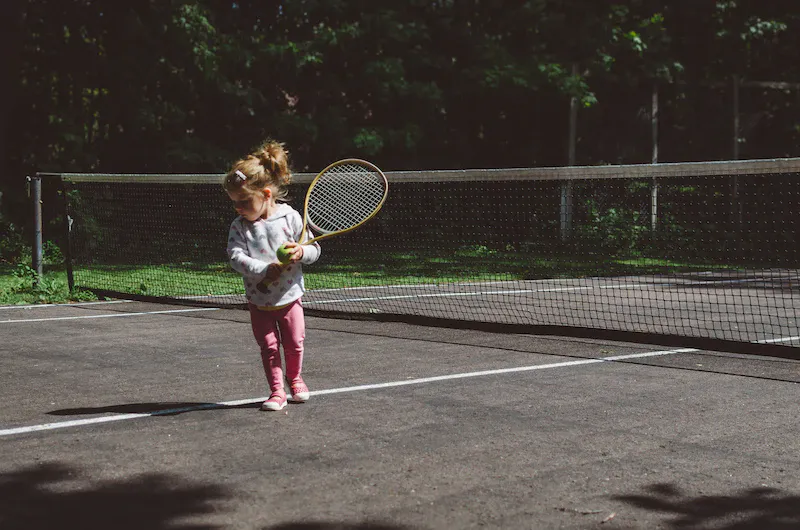Tantrum Tales: Managing and Understanding Outbursts

Understanding the Difference Between Time-Ins and Time-Outs
As parents, we all want to do what’s best for our children, especially when they’re upset or misbehaving. One common method for disciplining children is the time-out, which involves isolating the child in a designated space for a certain amount of time as a consequence for their actions.
However, there is another approach called a time-in, which is a more empathic and non-punitive way of setting limits. The main difference between time-ins and time-outs is that time-ins focus on regulating emotions and offering support, whereas time-outs are based on isolation and punishment.
The reasoning behind time-outs is to teach children that their behavior is not socially acceptable. However, most of the time, when a child is behaving poorly, it’s because they’re having a hard time regulating their emotions. This is especially true for young children who haven’t fully developed their upstairs brain like adults have.
Children also seek proximity to their caregivers, so when we send them into isolation during a time-out, it can send them into a panic. It’s not a positive lesson for them to learn that when they mess up, their parents will not be there for them.
Instead, with time-ins, we shift our thinking about a child’s misbehavior or tantruming. We begin to describe a child in the throes of a fit as having a hard time or being upset, rather than being defiant or oppositional. We regulate ourselves and offer support to our child, figuring out what they need most at the moment, whether it’s a firm hug or space to calm down.
Teaching is the first teachable moment during a tantrum. We offer a simple and quick explanation of what’s not acceptable behavior, without judgment. We can still set limits and not teach our children that hitting or lying is okay, but we also help guide them back to a safe space where their emotions and brain are more regulated and integrated.
Using time-ins instead of time-outs is not permissive parenting; it’s setting limits in a more empathic and supportive way. It helps our children learn that we are there for them, even when they’re at their worst. By hugging the tantrum and releasing emotions, our children can become happier and healthier in the long run.
Why Time-Outs May Not Be the Best Option for a Child Having a Tantrum
As parents, we all want to discipline our children in a way that teaches them right from wrong without damaging their relationship with us. One common method of discipline is the time-out, which involves isolating a child in a designated space for a certain amount of time as a consequence for their actions.
However, time-outs may not be the best option for a child having a tantrum. When a child is behaving in a difficult way, it’s usually because they’re having a hard time regulating their emotions. This is especially true for young children who haven’t yet fully developed their upstairs brain like adults have.
Sending a child to time-out can cause more harm than good. When a child is already having difficulty managing their behavior, sending them into isolation can send them into a panic. It can make them feel like they’re not loved or like they’re a bad kid. Even if we mean to teach them positive lessons about what’s socially acceptable, they may internalize that there’s a limit to love.
Additionally, time-outs don’t actually teach children any positive lessons. They don’t teach them how to regulate their emotions or behavior in a more appropriate way. If a distressed child is sent to their room after an infraction, they’re simply learning that when they mess up, their parents will not be there for them.
On the other hand, time-ins offer a more empathic and non-punitive way of setting limits. They focus on regulating emotions and offering support to a child in distress. By shifting our thinking about a child’s misbehavior or tantruming and offering support instead of isolation, we can teach our children that we are there for them even when they’re at their worst.
Using time-ins instead of time-outs does not mean we are permissive parents. We can still set limits and teach our children what’s socially acceptable without sending them into a panic or making them feel unloved. By hugging the tantrum and offering support, we can help our children regulate their emotions and behavior in a healthier way.
The Importance of Regulating Oneself as a Parent During a Child’s Tantrum
When a child is having a tantrum, it can be a challenging and emotional experience for both the child and the parent. As parents, it’s important that we regulate ourselves and stay calm during these moments so that we can be there for our children in an effective way.
Regulating oneself means centering oneself, taking deep breaths, and reminding oneself that we are the adult and that we can handle our child’s emotions. It’s important to affirm ourselves with positive self-talk, such as “I am the rock” or “I can handle this.” By regulating ourselves, we can be present for our child and provide the support they need to regulate their own emotions.
During a child’s tantrum, it’s also important to offer support. Some children may not want to be touched or looked at, while others may need a firm hug. We need to figure out what our child needs and offer it to them lovingly and patiently. This can include nonverbal signals that show our child we are not a threat, such as crouching down to their eye level, opening our fingers and palms towards them, and speaking in a gentle voice.
By offering support and regulating ourselves, we can help our child regulate their own emotions and behavior. This is the first step towards teaching them positive lessons about what’s socially acceptable and helping them learn how to regulate their emotions in a healthier way.
Remember, regulating oneself is not always easy, but it’s an essential part of effective parenting. By staying calm and centered, we can help our children feel safe and supported even in the midst of a tantrum.
Ways to Offer Support to a Child During a Tantrum
When a child is in the throes of a tantrum, they are often feeling overwhelmed and out of control. As parents, it’s our job to help them regulate their emotions and behavior, and offering support is one of the most important things we can do.
The first step in offering support is to figure out what our child needs. Some children may want a hug or a reassuring touch, while others may need space and time to calm down. It’s important to respect our child’s preferences and offer support in a way that works best for them.
One helpful technique is to get down to our child’s level, crouch or sit beside them, and make soft eye contact. This helps to show our child that we are not a threat and that we are there for them. We can also try offering nonverbal signals, such as opening our palms towards them or taking deep breaths together.
If our child is open to it, we can try offering verbal support as well. This might include simple phrases like “I’m here for you” or “I love you no matter what.” We can also try reflecting our child’s emotions back to them, saying things like “I can see that you’re really upset right now” or “It’s okay to feel angry, but hitting is not okay.”
Ultimately, the key to offering support during a tantrum is to stay calm and present. This can be difficult, especially if we’re feeling stressed or overwhelmed ourselves, but it’s essential if we want to help our child regulate their emotions and behavior. By staying centered and offering support in a way that works best for our child, we can help them feel safe and secure even in the midst of a difficult moment.
Remember, every child is different, and what works for one child may not work for another. The important thing is to be patient, loving, and supportive, and to keep trying until we find the strategies that work best for our child.
Changing How We Think About a Child’s Misbehavior or Tantrums
When a child throws a tantrum or behaves in a way that we don’t like, our first instinct as parents may be to punish them or put them in time-out. However, it’s important to shift our thinking about what’s really going on with our child’s behavior. Rather than labeling them as difficult or defiant, we need to understand that they are likely having a hard time regulating their emotions.
By changing our mindset, we can begin to see our child’s behavior as a sign that they need our help and support rather than a punishment. We can start to describe their behavior in more accurate and kinder ways such as “upset” or “having a hard time.” Just like a frightened animal, our child needs our gentle guidance to regulate their emotions and behavior.
Instead of sending them into isolation during a time-out, we need to offer support and connection to help them feel safe and loved. This may include crouching down to their eye level, using a gentle voice, and offering nonverbal signals such as an open palm or soft eye contact.
It’s important to remember that children seek proximity to their caregivers, and forced isolation can send them into a panic. By regulating ourselves and offering support, we can guide our child back to a safe space where their brain and emotions are more regulated and integrated.
So, the next time your child is misbehaving or having a tantrum, try shifting your thinking and offering support instead of punishment. Remember that your child needs you most when they are at their worst, and by being there for them, you can help guide them through their emotions and behavior.
The Teachable Moment During a Tantrum
During a child’s tantrum, it can be easy to feel overwhelmed and unsure of how to respond. However, it is important to remember that there is a teachable moment in every tantrum. This is the moment where we can offer guidance and teach our children important lessons about appropriate behavior.
The first step in this teachable moment is to connect with your child. Allow them to express their emotions and validate their feelings. Once they are calm and open to communication, you can begin to offer a simple and non-judgmental explanation of what behavior is expected of them.
It’s essential to keep it straightforward and concise, so your child can understand and learn from the message. By offering a clear and concise explanation, you are setting a limit and teaching your child what behavior is acceptable in a loving and empathetic way.
It’s important to remember that time-ins are not permissive parenting, and you are still setting limits for your child’s behavior. You are showing them that you are there for them, even when they are at their worst, and helping guide them back to a safe space where their brain and emotions are regulated and integrated.
In summary, during a child’s tantrum, it’s essential to use the teachable moment and connect with your child, offer a simple and non-judgmental explanation of what behavior is expected of them, and continue to guide them with love and empathy.
The Benefits of Using Time-Ins Instead of Time-Outs
As a parent, it’s natural to want to teach your child how to behave properly and to set limits when necessary. However, traditional methods such as time-outs may not be the best option when a child is having a tantrum. Instead, using a method called time-ins can be more effective and beneficial for both you and your child.
When a child is in distress, they are seeking proximity to their caregiver. Time-outs, or isolating them, can be a serious threat and send them into a panic. Time-ins, on the other hand, allow you to be there for your child when they need you the most. By offering support and understanding, you can help guide them back to a safe space where their brain and emotions can become more regulated and integrated.
Time-ins can also be used to teach children positive lessons. Instead of punishing or shaming them, you can show them that you are there to help guide them in a positive direction. By regulating your own emotions and offering support, you can connect with your child and offer simple and quick explanations that they can understand.
It’s important to remember that using time-ins is not permissive parenting. It’s still important to set limits and teach your child what behaviors are acceptable. However, by using time-ins instead of time-outs, you are showing your child that you love and care for them even when they are at their worst. This can help build a stronger and more positive relationship between you and your child, and ultimately lead to better behavior in the future.
Have you tried using time-ins with your child? What were your thoughts on time-outs? Let us know in the comments below.
Hugging the Tantrum: How Releasing Emotions Can Help Your Child Be Happier
Tantrums can be tough for both children and parents. But did you know that allowing a child to express their emotions during a tantrum can actually lead to a happier and healthier child?
It’s important to understand that tantrums are a natural part of a child’s development and communication process. Children often lack the verbal skills to express their frustrations and emotions, so they resort to physical outbursts. By allowing a child to express their emotions during a tantrum, you can teach them healthy ways to release their emotions and manage their behavior.
When a child is having a tantrum, it’s important for parents to remain calm and present. This allows the child to feel safe and supported while they work through their emotions. Parents can help by validating their child’s feelings and providing a safe space for them to express themselves. Instead of trying to suppress the tantrum, parents can hug it and help their child learn to identify and manage their emotions.
Emotional regulation is a vital skill that children need to learn in order to cope with stress and anxiety throughout their lives. By hugging the tantrum and allowing a child to release their emotions, parents can help their child develop healthy coping mechanisms and a positive attitude towards expressing their feelings.
So, the next time your child is having a tantrum, try to remain calm and present, and provide a safe space for them to express their emotions. By hugging the tantrum and releasing emotions, you can help your child become a happier and emotionally healthy individual.
Conclusion
Tantrums can be overwhelming for both children and their parents, but it’s essential to understand that they are a natural part of childhood development. As parents, we have the responsibility to regulate ourselves and offer support to our children during these challenging moments. By hugging the tantrum and using time-ins instead of time-outs, we can create a safe space for our children to release their emotions and feel heard. Shifting our thinking about misbehavior and understanding the first teachable moment can also help us build stronger connections with our children and foster their emotional intelligence.
Remember that every child is different, and there is no one-size-fits-all approach to handling tantrums. However, with patience, empathy, and a willingness to learn, we can help our children navigate their emotions and develop healthy coping mechanisms that will benefit them throughout their lives. By focusing on the positive aspects of tantrums and seeing them as opportunities for growth and learning, we can create happier and healthier households for ourselves and our little ones.
















